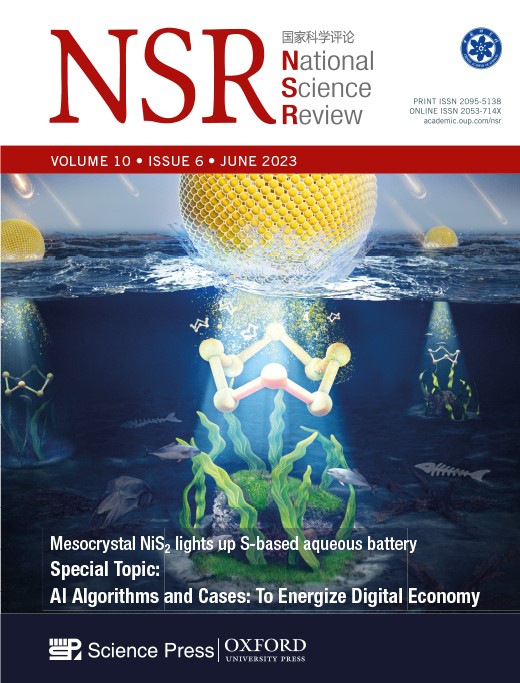Engineered Janus hydrogels: biomimetic surface engineering and biomedical applications
IF 16.3
1区 综合性期刊
Q1 MULTIDISCIPLINARY SCIENCES
引用次数: 0
Abstract
Hydrogel bioadhesives, when applied to dysfunctional tissues substituting the epidermis or endothelium, exhibit compelling characteristics that enable revolutionary diagnostic and therapeutic procedures. Despite their demonstrated efficacy, these hydrogels as soft implants are still limited by improper symmetric surface functions, leading to postoperative complications and disorders. Janus hydrogel bioadhesives with unique asymmetric surface designs have thus been proposed as a reliable and biocompatible hydrogel interface, mimicking the structural characteristics of natural biological barriers. In this comprehensive review, we provide guidelines for the rational design of Janus hydrogel bioadhesives, covering methods for hydrogel surface chemistry and microstructure engineering. The engineering of Janus hydrogels is highlighted, specifically in tuning the basal surface to facilitate instant and robust hydrogel-tissue integration and modulating the apical surface as the anti-adhesion, anti-fouling, and anti-wear barrier. These asymmetric designs hold great potential in clinical translation, supporting applications including hemostasis/tissue sealing, chronic wound management, and regenerative medicine. By shedding light on the potential of Janus hydrogels as bioactive interfaces, this review paper aims to inspire further research and overcome current obstacles for advancing soft matter in next-generation healthcare.工程化 Janus 水凝胶:仿生表面工程和生物医学应用
水凝胶生物粘合剂在替代表皮或内皮应用于功能障碍组织时,表现出令人信服的特性,可实现革命性的诊断和治疗程序。尽管这些水凝胶具有明显的功效,但作为软植入物,它们仍然受到表面功能不对称的限制,导致术后并发症和失调。因此,人们提出了具有独特非对称表面设计的 Janus 水凝胶生物粘合剂,它模仿了天然生物屏障的结构特点,是一种可靠的生物相容性水凝胶界面。在这篇综述中,我们为合理设计 Janus 水凝胶生物粘合剂提供了指导,涵盖了水凝胶表面化学和微结构工程的方法。重点介绍了 Janus 水凝胶的工程设计,特别是调整基底表面以促进水凝胶与组织的即时、稳健整合,以及调节顶端表面作为防粘连、防污和防磨损屏障。这些不对称设计在临床转化方面具有巨大潜力,可支持止血/组织密封、慢性伤口管理和再生医学等应用。通过揭示 Janus 水凝胶作为生物活性界面的潜力,本综述论文旨在激发进一步的研究,克服当前的障碍,推动软物质在下一代医疗保健领域的应用。
本文章由计算机程序翻译,如有差异,请以英文原文为准。
求助全文
约1分钟内获得全文
求助全文
来源期刊

National Science Review
MULTIDISCIPLINARY SCIENCES-
CiteScore
24.10
自引率
1.90%
发文量
249
审稿时长
13 weeks
期刊介绍:
National Science Review (NSR; ISSN abbreviation: Natl. Sci. Rev.) is an English-language peer-reviewed multidisciplinary open-access scientific journal published by Oxford University Press under the auspices of the Chinese Academy of Sciences.According to Journal Citation Reports, its 2021 impact factor was 23.178.
National Science Review publishes both review articles and perspectives as well as original research in the form of brief communications and research articles.
 求助内容:
求助内容: 应助结果提醒方式:
应助结果提醒方式:


